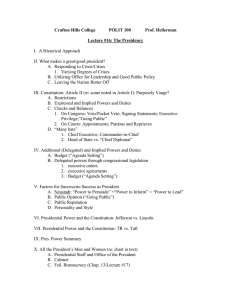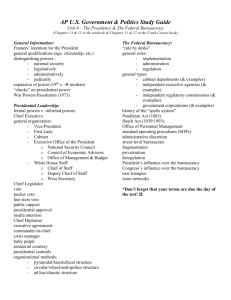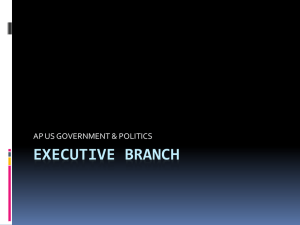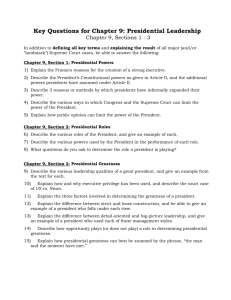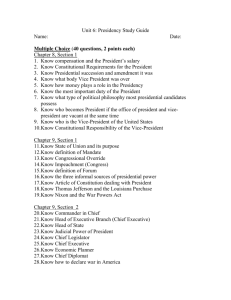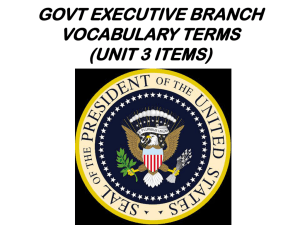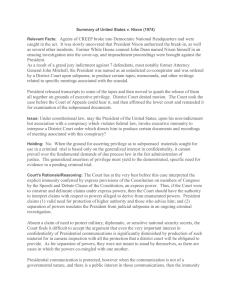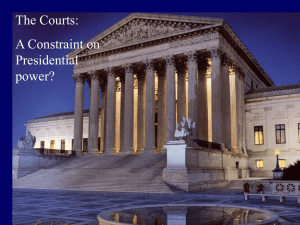PP 8: Presidential Powers Defined
advertisement
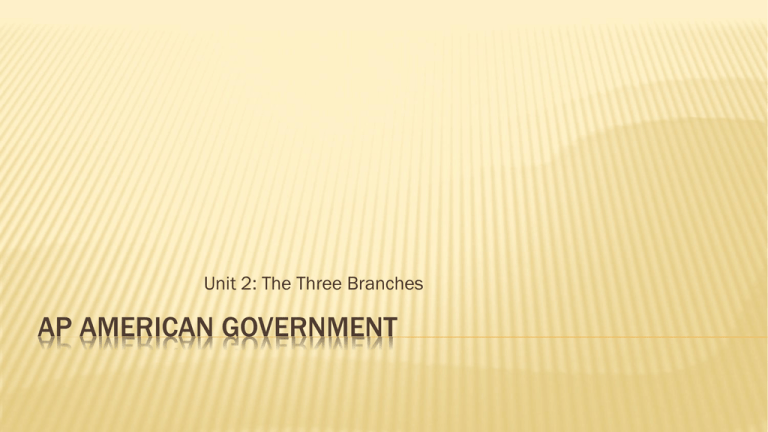
Unit 2: The Three Branches AP AMERICAN GOVERNMENT PRESIDENTIAL POWERS DEFINED Theories of Presidential Power Whig Theory – President beholden to Congress Stewardship Theory – President beholden to the people History of Presidential power Pre-Civil War Reconstruction Progressivism through the 1920s FDR – The Depression and World War The Modern Presidency PRESIDENTIAL POWERS DEFINED SCOTUS Decision on Presidential Power Removal Power – Myers v. United States (1926) and Humphrey’s Executor v. United States (1936) Executive Privilege – United States v. Nixon (1974) Executive Immunity – Nixon v. Fitzgerald (1982) and Clinton v. Jones (1997) Legislative Veto – Immigration and Naturalization Service v. Chadha (1983) Line-item Veto – Clinton v. City of New York (1998) Sole Organ of Foreign Relations – U.S. v. Curtiss-Wright Exports (1936) and Zivotofsky v. Clinton (2015) NLRB v. Noel Canning (2014) – recess appointments PRESIDENTIAL POWERS DEFINED War Time Powers Civil War – The Prize Cases (1863) and Ex Parte Milligan (1866) WWII – Ex Parte Quirin (1942) and Korematsu v. United States (1944) Cold War – Youngstown Sheet & Tube v. Sawyer (1952) and United States v. Reynolds (1953) War on Terror – Rasul v. Bush (2002), Hamdi v. Rumsfeld (2004), Hamdan v. Rumsfeld (2006) and Boumediene v. Bush (2008)

